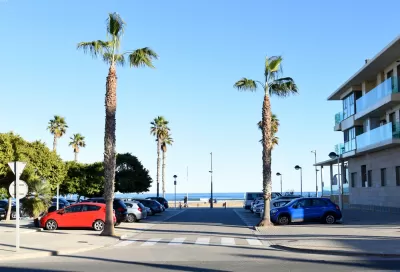The city’s decision to reinstate parking requirements for housing developments will likely slow the recent boom of ‘missing middle housing’ construction.

While other cities are moving to eliminate minimum parking requirements, Miami recently took a step in the other direction, requiring developers to adhere once again to parking minimums and removing city planners’ ability to issue waivers for projects located near transit.
According to Henry Grabar, writing in Slate, the 4-1 vote by the City Commission happened in a “peculiar fashion” and in opposition to the planning board’s 9-2 vote to keep the parking requirement suspension in place: “There was no study, no official rationale, and no sponsor who wanted to take credit.” Now, “Each new Miami apartment will once again be required to come with 1.5 parking stalls, rounded up, whether residents want them or not. The cost of building those spaces, spread across fewer units, will wind up raising rents—if the law doesn’t kill off projects altogether.”
Whatever the reason for the Commission’s decision, Grabar writes, “The decision will likely mark the end of Miami’s boomlet of ‘missing middle’ housing—the small buildings on small lots by small developers that have begun to densify and enliven the city’s core neighborhoods—and provide a cheaper alternative to most new construction.”
“[F]or the smaller players whose projects filled in vacant lots in the city’s core neighborhoods, the risk of waiting a year just to have an idea turned down may simply be too great.”
FULL STORY: How Miami Decided Parking Is More Important Than Housing

Planetizen Federal Action Tracker
A weekly monitor of how Trump’s orders and actions are impacting planners and planning in America.

Chicago’s Ghost Rails
Just beneath the surface of the modern city lie the remnants of its expansive early 20th-century streetcar system.

San Antonio and Austin are Fusing Into one Massive Megaregion
The region spanning the two central Texas cities is growing fast, posing challenges for local infrastructure and water supplies.

Since Zion's Shuttles Went Electric “The Smog is Gone”
Visitors to Zion National Park can enjoy the canyon via the nation’s first fully electric park shuttle system.

Trump Distributing DOT Safety Funds at 1/10 Rate of Biden
Funds for Safe Streets and other transportation safety and equity programs are being held up by administrative reviews and conflicts with the Trump administration’s priorities.

German Cities Subsidize Taxis for Women Amid Wave of Violence
Free or low-cost taxi rides can help women navigate cities more safely, but critics say the programs don't address the root causes of violence against women.
Urban Design for Planners 1: Software Tools
This six-course series explores essential urban design concepts using open source software and equips planners with the tools they need to participate fully in the urban design process.
Planning for Universal Design
Learn the tools for implementing Universal Design in planning regulations.
planning NEXT
Appalachian Highlands Housing Partners
Mpact (founded as Rail~Volution)
City of Camden Redevelopment Agency
City of Astoria
City of Portland
City of Laramie





























